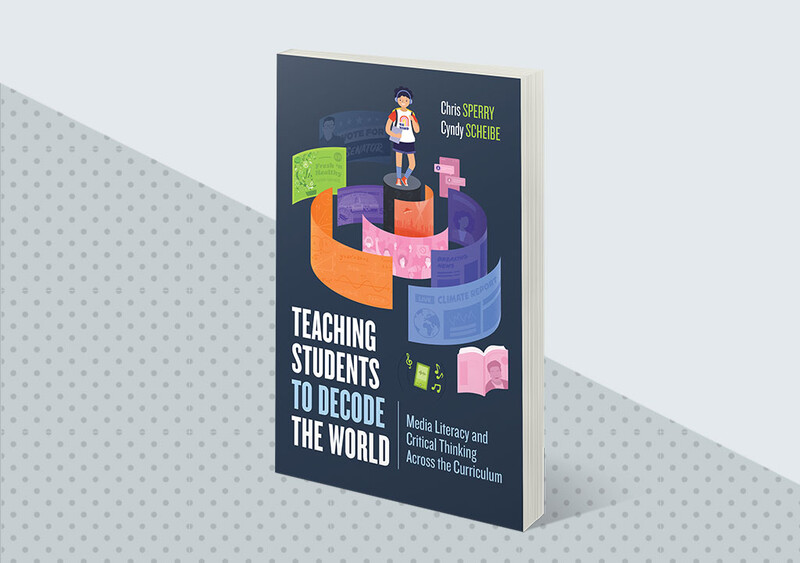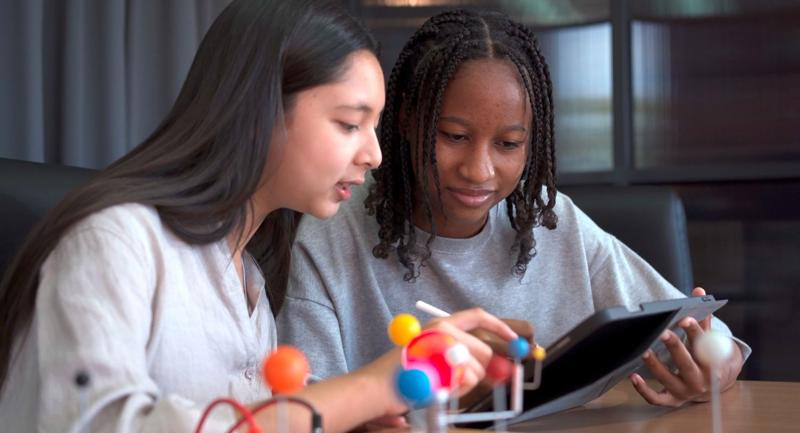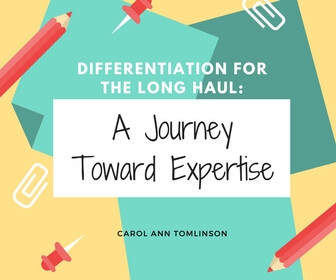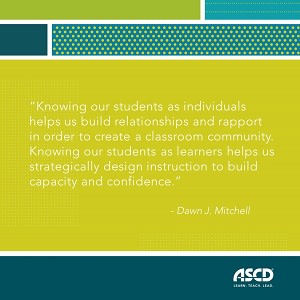In 2020, the World Health Organization declared that we are in the midst of a global infodemic: an overabundance of information—some accurate and some not—that makes it hard for people to find trustworthy sources and reliable guidance when they need it. This media-fueled crisis is shaking the foundations of our democracy by undermining our collective understanding of truth through politicized and monetized misinformation and disinformation.
But there is a solution: By teaching K–12 students to habitually ask critical questions about the media messages they see, read, and hear—and to reflect on their own biases and interpretations of that information—teachers can stem the infodemic tide. For more than 25 years, we have been codifying this process that we call Constructivist Media Decoding (CMD).
CMD enables any teacher to engage their students in a curriculum-driven, inquiry-based media analysis activity that will address core content-area knowledge and skills and teach habits for critical thinking about media messages. These short, easy-to-integrate activities can be used throughout the year.
While the recipe is simple and accessible, the practice of CMD has great implications for shifting teaching strategies and for providing a way for all educators to address the epistemological crisis confronting our schools, our students, and our democracy.
The CMD Recipe
Constructivist: The pedagogy of constructivism proposes that learners construct their own meaning—we cannot just fill them up with skills or knowledge. Students learn best from active inquiry where they hear from their peers. Therefore the teacher needs to facilitate the learning process, not just tell students what to think.
Media: For students to become authentically media literate they need to develop habits of critical questioning of all media messages, including but not limited to digital media. This can happen when teachers at all grade levels and across the curriculum continually repurpose media (Snapchat and TikTok but also films, songs, posters, and textbooks) for critical analysis as well as content instruction.
Decoding: This is the process where the teacher chooses the documents and facilitates an objectives-driven but student-centered approach to collective media analysis that addresses core content standards and teaches habits of critical thinking.
Designing a Brief Constructivist Media Decoding Activity
Decoding activities can be as brief as five minutes. They can be used to introduce a new unit or to assess learning at the end of a unit. They can provide core background knowledge (through the media) or they can have students apply knowledge learned during a unit as they analyze rich media documents. They can be a fun hook for learning and they can teach core disciplinary knowledge and skills.
The Steps:
- Find an engaging media document (short video clip, painting, social media post, book cover, meme, etc.) that ties to the curriculum.
- Identify a content area objective that can be addressed through an analysis of this document.
- Identify a media literacy objective for the analysis (see Project Look Sharp’s "Categories and Sample Questions for Media Decoding" in Figure 1 below).
- Turn your objectives into questions for document analysis.
- Think through how the students might answer these questions and plan possible responses.
To see how these steps are implemented, check out the following sample activities for integrating media analysis into the core curriculum:
1) As a closing activity for a 1st grade science unit on matter: liquid, solid, and gas.
Media Document: A 30 second clip from the animated cartoon Spiderman Meets Hydro-Man.
Content Objective: Students will identify accurate and inaccurate information about matter.
Initial Question: What is true and what is not true about liquid and gas in this video?
Follow up Question: How did the video show that?
Media Literacy Objective: Students will reflect on authorship, purpose and credibility
Initial Question: Why would the makers of Spiderman show things that aren’t true about matter in this video?
Follow Up Question: So, if the video was made to be fun but not necessarily true, what does that teach us about what we need to do when we watch TV?
2) As the introduction to a 9th grade global studies unit on the Middle East.
Media Document: The first 70 seconds from the 1992 Disney movie, Aladdin.
Content Objective: Students will recognize stereotypes in popular culture media.
Initial Question: What are the messages about the Arab word in this clip?
Follow up Question: What is your evidence in the video?
Media Literacy Objective: Students will reflect on the potential impact of stereotypes on their views of other cultures
Initial Question: Does this intro perpetuate stereotypes? How?
Follow Up Question: How might these stereotypes impact your views of the Arab world?
Figure 1. Categories and Sample Questions for Media Decoding
Source: Created by Cyndy Scheibe and Chris Sperry, Project Look Sharp, and Faith Rogow,
Insighters Educational Consulting. Creative commons license. (PDF)
Teaching Students to Be “Truth Seekers”
The research of Kahne and Bowyer has shown that high school students who are very well informed about politics are no better at distinguishing truth claims in the news than students who know very little. We can’t just keep telling our students the truth, we need to teach them how to be truth seekers.
Kahne and Bowyer went on to identify three components of media literacy initiatives that did help all students to become better at identifying mediated truths:
1) Students evaluating conflicting perspectives in the media.
2) Students justifying their own claims with evidence.
3) Student reflecting on their own thinking, especially their confirmation biases.
When we have our students consistently ask critical thinking questions about media messages (e.g., Who produced this for what purpose? Is it credible and how do I know?) and we ask them to reflect on their own thinking (e.g., What is my emotional response to this? How does my identity impact my interpretation?) we build their well-reasoned abilities to navigate their media-saturated world.
Additionally, the integration of media decoding across the curriculum will provide an accessible entry point for all educators to practice inquiry-based instruction. It will give them the experience of listening well to student meaning making and would shift teaching to be more student-centered and effective. It will make our classrooms more relevant and enfranchise traditionally disengaged students.
Additional Resources
To get a sense of how this process works, you can watch short annotated video demonstrations of Chris Sperry, Cyndy Scheibe, and other educators leading decodings at different levels and for different subjects.
All the materials for these activities (lesson plans, media, etc.) and more than 500 other curriculum aligned media decoding lessons are available at Project Look Sharp at no cost to educators.
Teaching Students to Decode the World
Learn to help your students skillfully sort fact from fiction.









